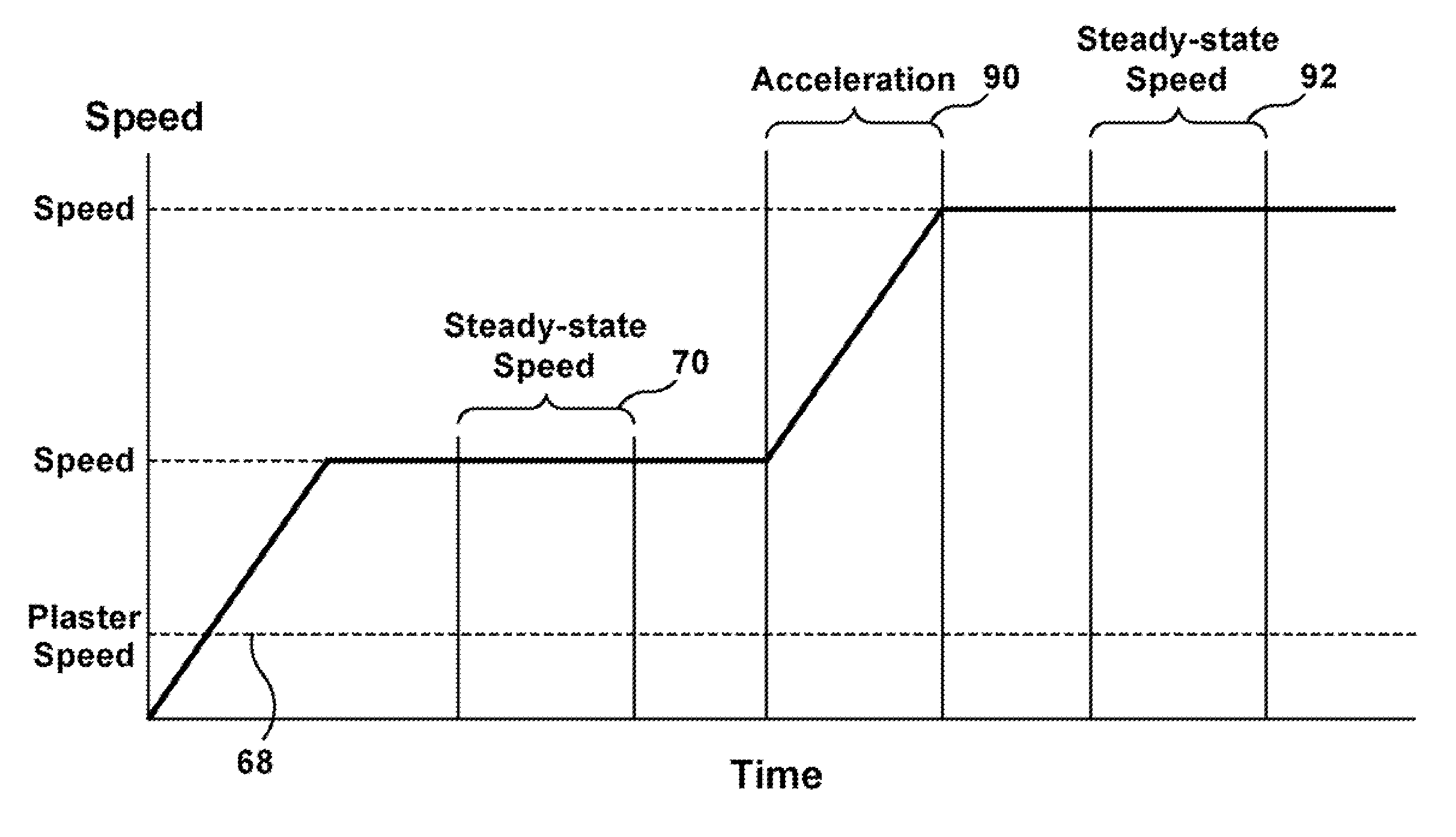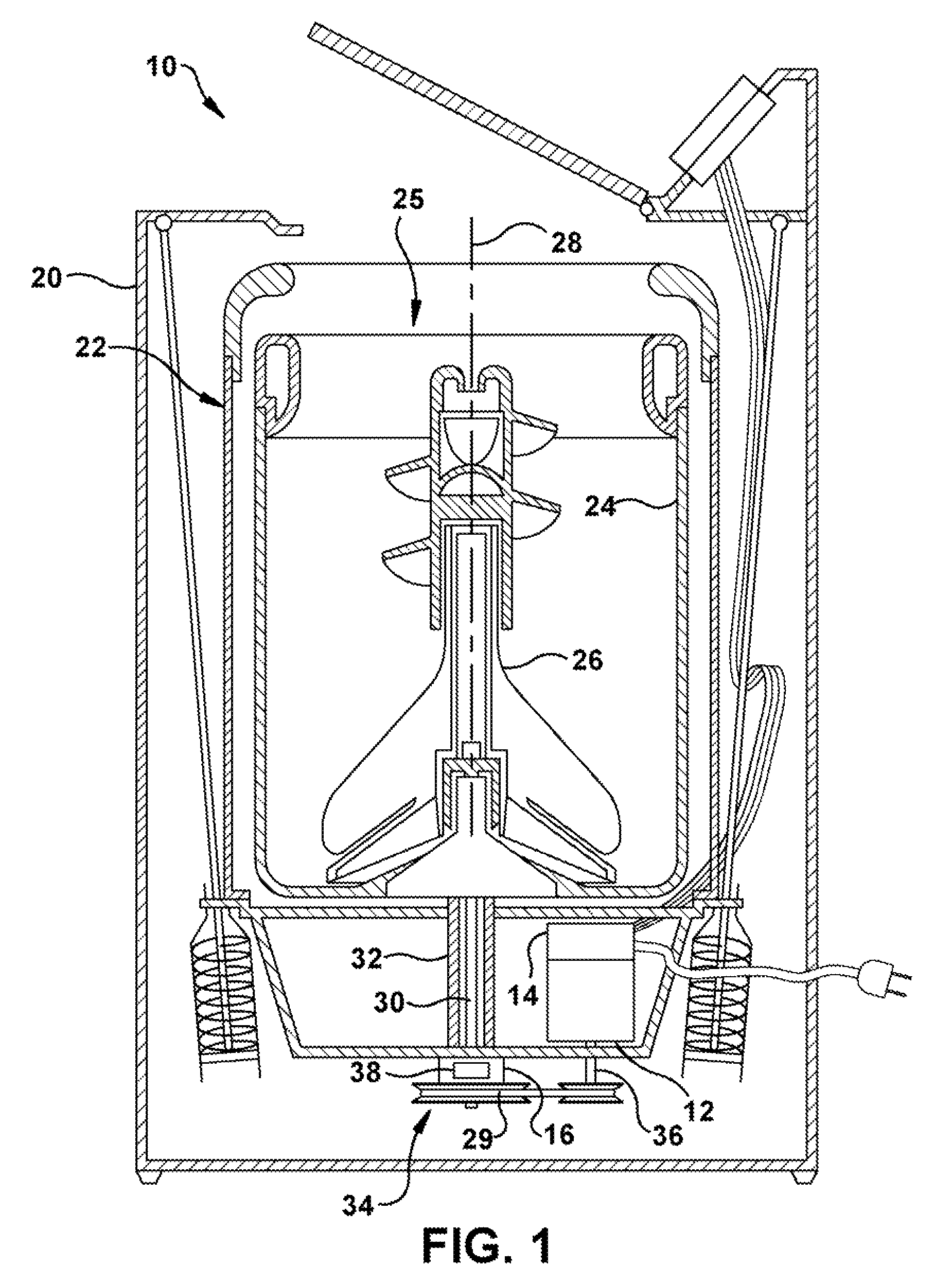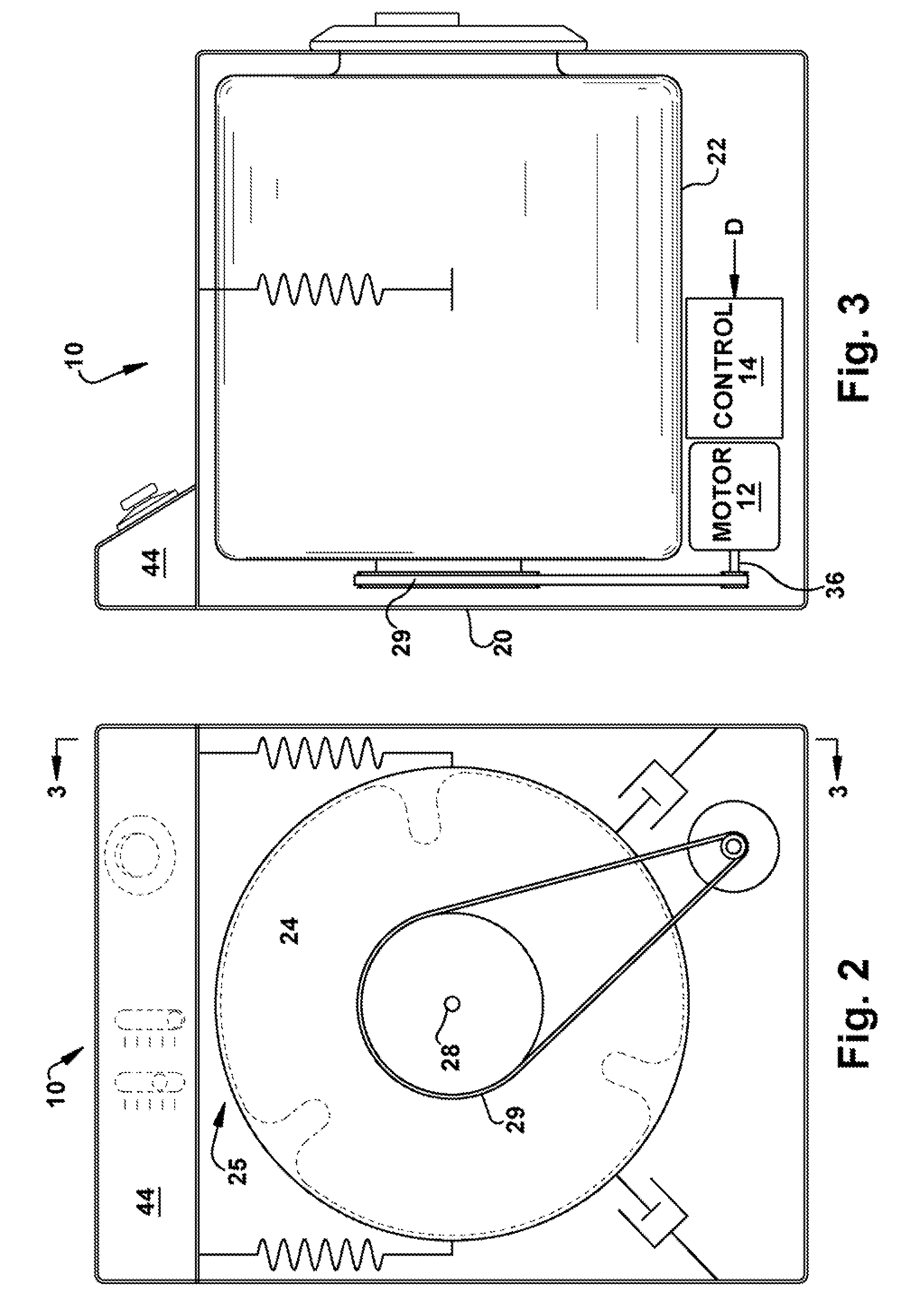Load size measuring apparatus and method
a load and measuring device technology, applied in the field of measuring an aspect of a load, can solve the problems of increasing energy consumption, affecting the effectiveness of washing, and large clothes loads that require large quantities of water
- Summary
- Abstract
- Description
- Claims
- Application Information
AI Technical Summary
Benefits of technology
Problems solved by technology
Method used
Image
Examples
Embodiment Construction
[0035]One embodiment of the present invention provides a method and apparatus for determining a load size in a rotatable basket that reduces the effects of friction in the determination. In a broad aspect, energy required to maintaining a stable velocity of the basket is subtracted from energy required to accelerate the basket with the remaining energy being that associated with the load itself and that is, in turn, proportional to load size.
Washing Machine Introduction
[0036]Referring to the drawings and in particular to FIG. 1, a washing machine (“washer”) according to an exemplary embodiment of the present invention is illustrated and is generally referred to by reference numeral 10. For purposes of clarity, aspects of washer 10 necessary for understanding of the present disclosure, as well as aspects helpful in understanding the operation of washer 10 are described herein. Washer 10 described herein can be a vertical axis washer 10 as is illustrated in FIG. 1 or a horizontal axis...
PUM
 Login to View More
Login to View More Abstract
Description
Claims
Application Information
 Login to View More
Login to View More - R&D
- Intellectual Property
- Life Sciences
- Materials
- Tech Scout
- Unparalleled Data Quality
- Higher Quality Content
- 60% Fewer Hallucinations
Browse by: Latest US Patents, China's latest patents, Technical Efficacy Thesaurus, Application Domain, Technology Topic, Popular Technical Reports.
© 2025 PatSnap. All rights reserved.Legal|Privacy policy|Modern Slavery Act Transparency Statement|Sitemap|About US| Contact US: help@patsnap.com



